
Behind every great male deity is a woman fed up with his god complex.
Sad but true, so many religions were sharpened into patriarchal weapons, using carefully selected scriptures to devalue the position of women in society. This oppression worked well for thousands of years, but in modern decades, the female army has taken a stand, demanding equality in all areas, rising to the top, on their way to destroy every man and ultimately conquer the planet.
To honour the inevitable supremacy of our new overlords, let us take a trip back through time and remember the influential ladies who religious history ignored. Some had their names intentionally scribbled out from the holy pages. Others were deeply in love, just trying their best to support their man’s insane visions. And then there were those deities even more powerful than their partners, keeping a watchful eye on their husband’s naughty behaviour, ensuring they left the toilet seat down OR ELSE.
10. Mary Magdalene, Lover of Jesus (Christianity)
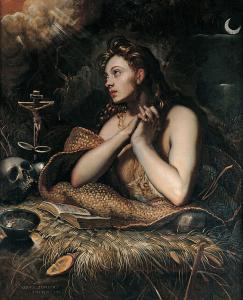
Despite the church doing its damndest to photoshop Mary Magdalene out from the Jesus tale, her presence has persisted as the top lady of the New Testament (save the Virgin Mother). Mary and Jesus met when he exorcised seven demons from her, and she understandably fell head over heels after that impressive feat, infatuated ever since. She travelled with Christ wherever he went. She tearfully witnessed the crucifixion. And she was the only person confirmed by all four Biblical gospels to see his empty tomb before anybody else.
The non-canonical and extra-canonical Gnostic texts sing Mary’s praise the loudest. The Gospel of Philip was rejected from the Bible, perhaps because it explicitly called Ms Magdalene the “companion” of Jesus, who he “kissed often” and loved more than his other disciples, referred to as the “Apostle of the apostles“.
This closeness to Jesus has aggravated a sore spot for Christian writers from the beginning. In another Bible absentee, the Gospel of Thomas, Peter argues with Christ that “Mary should leave us, for females are not worthy of the life.” In the year 591, Pope Gregory attempted to discredit Mary Magdalene by combing her with the “sinful woman” who anointed Jesus’s feet in Luke (7:36–50). This reputation snowballed into prostitution, a long-since disproven identification that has unfortunately stuck in many people’s heads. However, various denominations (including Catholic, Eastern Orthodox, Anglican, and Lutheran) now recognise lovely Mary Magdalene as a saint. Damn right!
9. Hathor, Consort of Ra (Ancient Egypt)
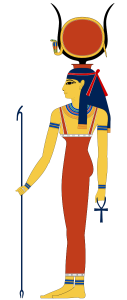
Unpacking the incestuous timeline of Ancient Egyptian relationships is a messy affair, albeit unsurprising. It’s easy to see how timelines got tangled due to the ceaseless rebirths, merging of deities, and these beings’ tendency to transform into animals. Take Ra, for example. As one of the most important gods of the day, he was known to frolic with multiple partners, including Sekhmet, Bastet, and Satet. There weren’t any hard feelings, though, for these goddesses did the same thing. But there is no romantic dynamic as memorable as Ra’s connection with Hathor.
Hathor was a widely worshipped sky deity. She is best remembered for her chosen cow shape while she watched over topics like dance, sexuality, and maternal tasks. These representations reveal a liberated soul who offered her love to A-list celebrities such as Horus and Atum (the forefather of the entire world). But her partnership with Ra is tricky to stomach. She was his lover, yes. But she was also his daughter. And she was also his mother. Sounds impossible, but when the scripture claims he impregnated his mom to give birth to himself, you get a sense of the surreal logic we’re dealing with here. Someone has to keep the divine bloodline pure, I guess?
In the end, there was only one apple of Ra’s eye, and that was the Eye of Ra, the sun disk often depicted above his head. This feature is a separate goddess placed to protect Ra, associated with various female forces. But whenever Hathor was placed in that role, it was said they were the highest couple of divinity, balancing the creative power of the universe. Relationship goals!
8. The Principle Deities and Their Lovers (Hinduism)
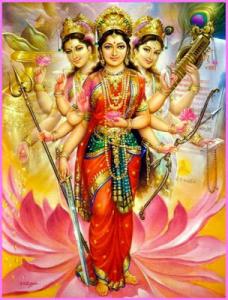
One of the reasons the Hinduism pantheon is so dauntingly extensive is that every god freely incarnates into a million avatars. However, if you trace it back far enough, you’ll usually end up with one of the three Principle Deities: Brahma (The Creator), Vishnu (The Preserver), and Shiva (The Destroyer).
Interestingly, these potent male energies did not allow their blessed statuses to drive up their egos, and they were each passionately monogamous. Perhaps it’s easier to be faithful when your partner is a different person every morning?
Take Lakshmi, for example. Known as the Mother Goddess, she was Vishnu’s one and only, the couple regularly descending to earth as completely fresh characters (such as Sita and Rama, or Radha and Krishna). Similarly, Saraswati is the exclusive lady that Brahma desired, and a total catch at that! She softly strummed her lute with her four arms while stealing everyone’s heart, including the Jainist and Buddhist sects that worship her too.
The only story that veers slightly from this path is that of Shiva. He fell in love with Sati, the goddess of happy relationships and longevity. They got married against her father’s will, who was a powerful king named Daksha. After her dad publicly insulted Shiva and his followers, Sati killed herself by jumping into a fire. Shiva was so devastated that he nearly destroyed the entire universe, but the other gods intervened. They decided to reincarnate Sati, and she was reborn as Parvati, the goddess of nourishment, harmony, and devotion. The reunited couple had two sons together, one of whom was a reasonably popular guy you may have heard of called Ganesha.
7. Hera, Wife of Zeus (Ancient Greek)
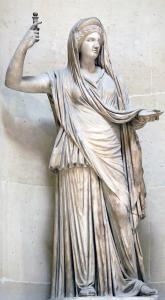
There ain’t no party like a Greek Mythology party! Man, those deities were wild! Zeus, the King of the Olympian Gods, was particularly vulnerable to lustful temptations. He had an unquenchable thirst for mortal women and manifested himself into various Earthly forms to father plenty of half-god children. Which is bad enough but made even worse when you notice the ring on his finger.
Hera was her name, and she was not the girl to mess with. Famously driven by fiery jealousy, any of Zeus’ pervy pursuits were at risk of drastic consequences, whether his ladies were at fault or not. Here are some examples:
- Hera sent a gadfly to persistently bite pregnant Princess Io until she ran away to Egypt.
- When Hera discovered that Semele was carrying the King God’s child, she tricked Zeus into revealing his authentic form to her, which is impossible for a human to withstand. Semele evaporated from the divine lightning, oops.
- Zeus impregnated Leto, so Hera instructed a giant serpent to chase the lady around whenever she tried to give birth.
- Similarly, after Alcmene delivered Zeus’ son, Hera commanded two massive serpents to murder the eight-month-old infant. Thankfully, this son just so happened to be Hercules, a natural-born hero. They found him strangling one snake in each hand, playing with them like toys.
Because of her powerful flexing, Hera is a Pagan feminist icon, praised as the goddess for marriage, family, and, counterintuitively, the caretaker of women during childbirth.
6. Asherah, Wife of Yahweh (Abrahamic)
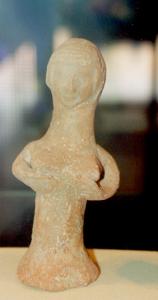
The most popular God in the world is Yahweh, assumed as the same Supreme Being ruling from the Torah through the Bible and into the Quran (albeit using a myriad of different names). But what may surprise people is that Yahweh was originally worshipped as part of a much larger gang of Canaanite gods. There was a diety for the sun (Shamash), the moon (Yarikh), the Underworld (Mot), and plenty more. That said, none were as revered as highly as Yahweh’s wife, Asherah.
Asherah was the goddess of fertility. She appeared extensively in many ancient Semitic writings and in the form of moulded figurines, including a Ugaritic amulet which displayed a “tree of life” growing out from her belly. It makes sense, as according to Hittite mythology, Asherah mothered up to 88 sons.
Reportedly, Asherah was as powerful as Yahweh and highly adored by female worshipers. Hence, when Judaism moved into a patriarchal monotheistic faith, the authors of the scripture did their best to scrub Asherah from existence. Fortunately, they missed a few spots where the “Queen of Heaven” is mentioned by that rightful title.
The children gather wood, and the fathers kindle the fire, and the women knead their dough, to make cakes to the queen of heaven, and to pour out drink offerings unto other gods, that they may provoke me to anger.
— Jeremiah 7:18And when we burned incense to the queen of heaven, and poured out drink offerings unto her, did we make her cakes to worship her, and pour out drink offerings unto her, without our men?
— Jeremiah 44:19
The Bible further documents the destruction of Asherah’s name in both Books of Kings. They tell of when Asa and Josiah wrecked
statues of the deity, holy landmarks gone that we may have otherwise enjoyed today.
He even deposed his grandmother Maakah from her position as queen mother, because she had made a repulsive image for the worship of Asherah. Asa cut it down and burned it in the Kidron Valley.
— 1 Kings 15:13Josiah smashed the sacred stones and cut down the Asherah poles and covered the sites with human bones.
— 2 Kings 23:14
Finally, in Hosea 2, we hear Yahweh announcing his divorce from an unnamed woman. Most agreed-upon interpretations claim that the “wife” is the land of Israel personified. However, others find it suspicious, hypothesising that Yahweh declared his separation from Asherah, off to dominate the landscape alone. Decide for yourself.
Despite these many remnants, the plan worked, and Asherah is largely overlooked by modern Abrhamaic audiences. But those who know will never forget her mistreatment, and vengeance will be ours!
5. Princess Yaśodharā, Wife of Buddha (Buddhism)
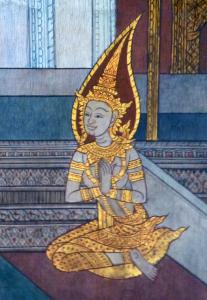
Before The Buddha became The Buddha, he was Prince Siddhartha Gautama. He married Princess Yaśodharā when they were both 16. At age 29, Yaśodharā gave birth to their son, Rāhula. Like many new fathers, Siddhartha decided he couldn’t deal with this life and abandoned the family the very next day. Yaśodharā was crippled by grief.
In fairness, Prince Siddhartha Gautama had been feeling weird for a while, and his renunciation of family responsibilities led to a permanent shift in global consciousness. Determined to unlock enlightenment, he spent six years experimenting with techniques until he smashed through the ceiling of awareness. He dedicated the rest of his days to teaching his realisations, Buddhism rapidly spreading and remaining profoundly popular as the fourth biggest religion in the world (500+ million followers, just over 5.06% of the human race).
Princess Yaśodharā retreated into a quiet life but never entirely relinquished her love for her husband. She kept up with news about his quest and spoke highly of the man to their son. The enlightened Buddha eventually revisited the family, and the exchange was warm from mutual fondness. Both mother and child became devoted Buddhists soon following.
4. The Many Wives of Muhammad (Islam)

Opposers of Islam like to use Surah 4 An-Nisa, Ayat 3-3 in the Quran as an example of the religion’s sexist ways, as it appears to encourage multi-wife polygyny.
If you fear that you might not treat the orphans justly, then marry the women that seem good to you: two, or three, or four. If you fear that you will not be able to treat them justly, then marry (only) one, or marry from among those whom your right hands possess. This will make it more likely that you will avoid injustice.
— Surah 4 An-Nisa, Ayat 3-3
Those Islamaphobes don’t understand that before the arrival of Prophet Muhammad (peace be upon him), females were essentially a currency that men traded, marrying however many they wished. In this manner, the Quran cautiously promoted restraint and is often viewed as a pro-feminist text compared to pre-Islamic Arabia.
Regardless, Muhammad was above his laws. He married his initial wife, Khadija bint Khuwaylid, at age 25 when she was reportedly 40. Khuwaylid was the first person to whom Muhammad conveyed his revelations, and she was an instant supporter known as his foremost follower. This monogamous union lasted 25 years until Khadija died in the Ramadan of Muhammad’s 10th year of Prophethood.
Muhammad was heartbroken but soon moved on to marry at least ten more wives. The most controversial of whom was Aisha, a seven-year-old at the time of the wedding, nine when they consummated. Her age has caused fierce debate across modern commentary, but Sunni Muslims have always revered her for her intellect, her dedication to her husband, and her influential role in early Islam.
The Prophet’s number of women was plentiful, yet bore him only seven children. Turns out, that was enough, and we can continue to map his blessed bloodline to people who walk among us today.
3. Ahurani, Wife of Ahura Mazda (Zoroastrianism)

Before Ahura Mazda announced himself as the One True God to Zoroaster, he was part of a wider Persian pantheon. His two best buddies were Mithra (the eventual godhead for the Roman Mithraic cult), and Anahita (the goddess of fertility and healing). And if you thought Ahura Mazda and Anahita were about to fall madly in love, you would be absolutely… wrong.
There is very little evidence that Ahura Mazda had romantic feelings for anyone. However, linguistic scholars noticed something strange about the title given to a group of water gods, namely the Ahurani. The suffix -ani means “companion, wife, or mate”, leading studies to rethink that Ahurani was perhaps a singular deity, as Ahura-Ani, the partner of Ahura Mazda. Considering the stuff we’ve already read in this article, it wouldn’t be remotely surprising.
For those wondering what Ahura Mazda means, it’s “Lord Wisdom”, which, funny enough, is my nickname too.
2. Lady Qiguan, Wife of Confucius (Confucianism)
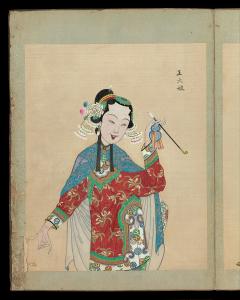
Born in 551 BCE, Confucius’ influence on East Asian philosophy continues to resonate profoundly within those cultures today. He taught the importance of social harmony through traditions, morality, education, and strong family life. But what so many people don’t know is that Confucius had a small family himself.
I’d like you to meet Lady Qiguan, a woman so overlooked that she does not even have her own Wikipedia page. Confucius married her when he was only 19, and their union produced two children: a son, Kong Li, and a daughter, Kong Jiao. Whatever happened to Lady Qiguan is lost in unwritten history books, but descendants of the couple walk the planet right now, around 79 generations later.
1. Daughter of the Dragon King, Wife of Pangu (Chinese Mythology)
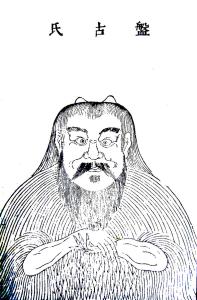
Chinese legends tell that Pangu sat in a cosmic egg for 18,000 years, waiting, scheming. When the moment was just right, he exploded from the shell, creating the earth and the sky. He then spent another 18,000 years pushing the sky upwards, separating the environments for the rest of us.
According to rumours from the Bouyei people, Pangu eventually retired to live a more leisurely life. He developed a keen interest in rice farming and married a girl known only as the Daughter of the Dragon King (a water god). The two were nearly a happily-ever-after tale until they had a son called Xinheng. This child was very disrespectful and offended his mother, so much so that she abandoned the family to go dwell in heaven. Pangu and Xinheng begged her to return, but she refused, and that was the end of that relationship. Sorry to leave you on such a bummer.













